To Belsec
Today is a day where we will be a lot on the road: that means
we will have again an early start: so at 7.30 we were already driving eastwards
deeper into Poland: with around 450 km and as per Google map 5.5 hrs – we will
be quite a bit on the road.
Coffee on the road
the plan was that we have coffee, and then we leave and have
breakfast on the road... we started driving and it was nearly 1.5 hours until we
found a gas station and a coffee shop... guess we didn't order the coffee
correctly since Paul got an espresso instead... we have to learn a little bit
more polish: what we wanted was a Kawa
A wooden orthodox
Church
And during we are driving we see near the road a wooden
orthodox church in the little town of Kowalowka– Gine never saw one like this,
and since Paul drove too fast: that means he had to turn around and park, so we
can check it out. We walked around this
old church from 1767. Near it was a “Belfry” a structure where the bells were
hanging.
After this quick break with fresh air and walking we are on
the road again.
What is Operation Reinhard?
- It was the secret German Nazi plan chaired by Reinhard Heydrich to exterminate the majority of Polish Jews – as part of the final solution: It is the deadliest phase of the Holocaust with the introduction of the extermination camps: they were built within months and killed thousands of Jews daily
- Odilo Glodznik (1904-1945): was a SS leader and friend of Himmler, he had a leading role in Operation Reinhard, he may was the originator for the extermination camps industrial murder concept suggesting it to Himmler in Oct 1941. He was setting up the 3 extermination camps: Belzec, Sobibor & Treblinka
- Small numbers of prisoners were selected from each transport to support the main function of the camps = the Sonderkommando: taking the corpses from the gas chambers and bury them or burn them, others worked in administration: sorting valuables for transport to Germany, the movement of the new arrivals as well as cleaning the freight cars for the next deportation – they were on a regular base killed and replaced
- On 19. Oct 1943 the operation was terminated and Operation Reinhard Camps were dismantled
What are the extermination camps or killing centers /
death centers?
- The extermination camps were almost exclusively death factories – they were also known as Operation Reinhardt: the purpose was to kill as many as possible, intended for efficient m ass murder
- Chelmno was the first Killing center and opening in 1941: 6 weeks before the Wannsee Conference - In 1942 the Nazis opened Belsec, Sorbibor and Treblinka II, Majdanek and Auschwitz II were then also used as death camps
- They constructed gas chambers to increase killing efficiency and make it more impersonal to the workers: Birkenau was the largest death camp: at the height of deportation gassed 6000 victims a day
- They killed more than 3 Mill in the killing centers, in March 1942 80 % of all the Holocaust victims were still alive – 11 month later in Feb 11 only 20 % of them were still alive: the death toll of Operation Reinhard totalled around 1.7 Mill
- The SS considered the killing centers top secret – the grounds of some of the killing centers were landscaped or camouflaged to disguise the murder of millions, also to uphold the secrecy in autumn 1942 the bodies were exhumed and burned on open-air ovens made of rail tracks: done in Belsec, Treblinka II, Sorbibor and Chelmno – after completing the detachment members performing it were shot
Odilo
Globocnik:
- Born in 1904 into a germanised family in Trieste, in 1922 he became a prominent member of the pre-Nazi Carinthian paramilitary organization, in Aug 1933 a member of the Austrian SS and was arrested for public support of the Nazi party. He joined the SS in 1934 and in 1938 became Gauleiter in Vienna where he opened an Anti-Semitic political exhibition and also said “I will not recoil from radical intervention for the solution of Jewish questions”
- In Nov 1939 he became SS and police leader in Lublin: He was responsible for liquidation Warsaw Ghetto (500.000 Jews), Bialystok Ghetto, resettling poles for ethnic cleansing, implementing the Lublin ghetto and camp
- He had a meeting with Himmler on Oct 13, 1941: when he got the verbal approval to start constructing Belsec, At the meeting he proposed the exterminating of Jews in an assembly line fashion using gas chambers. A few days later Himmler forbade all further Jewish emigration from Reich territory “in view of the forthcoming final solution to the Jewish question” – Globocnik was in charge of Operation Reinhard
- From 1942-43 he also oversaw the beginning of he General plan Ost: to expel Poles from their lands and resettle those territories with Germans settlers
- After Operation Reinhard he was sent to Trieste and brought with him experienced killers from the death camps and Einsatzgruppen: where he was with Franz Stangl, Franz Reichleiter and Christian Wirth
- With the advanced of Allied troops, he went into hiding and captured by the British in March 1945. He committed suicide with a cyanide capsule. His body was brought to the local churchyard, but the priest refused to have “the body of such a man” in consecrated ground. He was buried outside the church yard.
We visit Death Camp Belsec:
Driving by the train station of Belsec and there is the
memorial site. you enter through a concrete gate and right away you are made
aware that you are at a extermination camp: with rusty writing on the concrete
walls:
.
Earth do not cover my blood - Let there be no resting place for my outcry - Job 18:16
.
Once you walk in you see in front of you a black field of ash
rock – and on the side staged railroad tracks, it gave you an awareness on how
the dead victims were burned, we walked over and I think that is really super
creepy to see.
We go into the exhibition first and get a grim look at the
past and what happened and to learn more about Belsec, ... this was clearly a killing center, I think
this is what really gets to you is that here you realize the purpose of killing
only.
Poland’s Jewish towns:
We read about stories from towns where the whole Jewish population was deported
here: we heard town names like Lwow: in March 1942 the 1st 15.000
Jews are deported, during the “Big Aktion” in Aug another 50.000 and again in
Nov another 9000 all to Belzec. Towns like Kolbuszowa, Rzesow (20.000), Tumacz
(2000), Tarnow (7000) Lublin (March 1942: 26.000), Krakow, Bilgoray, Izbica,
Sochy (got also burned down) . We learned about the 800.000 Jews living in this
area (Galicia district) –half of them were deported to Belsec. They brought
them all the way from Wuerzburg. One of the most scary thing is to see how organized and thorough it was.
The Katzman report:
we read his report written on June 30, 1943: “there were unbelievable obstacles
during the deportation actions, because the Jews were trying to avoid
resettlement by all means. They were trying to escape, were hiding in the most
unusual places: sewers, chimneys, sewage pits etc. They were barricading in
underground passages, in the basements of bunkers, holes in the ground, hiding
places under floors and furniture.” “The smaller the number of remaining Jews,
the greater their resistance”
- What do we know: they have lists on when and who got deported, lists on valuables they got as well as money and foreign currencies. We saw a list of all the towns they evicted and brought all Jews here
- What did we read: letters on how to organize it, that it would be ok to send daily 4-5 transports with 1000 Jews to Belsec - and those would then be no problem anymore
- What they found: Jewish armbands, some shoes, coins, keys – found in the landscaped area around the mass graves (most areas of mass graves are not excavated to leave the dead in peace)
- What’s left from the camp: a rusty pipe they used for the exhaust fumes (they found it in the 1960s), concrete numbers which they gave to the victims before sending them into the gas chamber to give false hope
- Did they rebelled?: according to a underground report, the Belsec Sonderkommando rebelled on June 13, 1942: they killed several SS Guards. this report also informed the Allies about Belsec
- How do we know about Belsec? Peter Janusz (1891-1963) was a member of the polish underground. He was a physician and the director of the county hospital in Tomaszow Lubelski - he got information from other underground members in Belsec, as well as some SS and Trawinki guards who were his patients. He send reports to London and Washington. After the war he wrote extensively about the history of Tomaszow and the Belsec camp.
- Who reported about Belsec? Kurt Gerstein (1905-1945) was a SS man and he released information about the Nazi killing centers in 1942. Working in the disinfection department of the Hygiene Institute of the SS he worked directly with Zyklon B. He visited Belsec and Treblinka in August 1942. He then gave reports to Sweden and the Vatican on what he saw. in April 1945 he surrendered to the French - we don't know why, but in July 1945 he committed suicide.
What did we learn:
- Model of the gas chambers: we saw a reconstruction made based on the testimony of Rudolf Reder and the polish Carpenter Stanislow Kozaw who built the chamber.
- Einsatzgruppen and Mass shootings: we heard about the 3000 men in the SS going through the Soviet union, shooting people – we saw the instructions they had for it: how deep the ditch should be, where the victims should be and how far away they should be when shooting. Because some of them found this psychological challenging they wanted to depersonalize the killing.
- Grafeneck: and we read here about Grafeneck which was part of the T4 – because 90% of all SS guards in Belsec were serving previously in the T4 operation.
The not-forgotten Victims:
- Szlamek Bajler: he escaped Chelmno killing center in Jan 1942 and provided information about the death centers to Jews in the Warsaw Ghetto and went to inform Jews in other Ghettos. During an Aktion in the Zamoc Ghetto on April 11, 1942 he was deported to Belsec where he died.
- Leijb Wolsztajn: he was 13 years old, when he got deported on April 11, 1942 to Belsec from the Zamoc ghetto -he could escape and went back in the ghetto to inform the council about it. He was then again deported to Belsec in Nov 1942
- Rudolf Reder: born in 1881 in Debica – died in 1968 in Toronto, A chemist, he owned a soap factory in Lwow, during the holocaust he lost his wife and his 2 children and was transported on Aug 11, 1942 to Belsec. Because of his good German he became part of the Sonderkommando – he claimed at the ramp to be a machinist and performed for 3 month maintenance on engines for the gas chambers, helped digging mass graves. He escaped in Nov 1942 when we went with 22 SS guards to buy building material. He published his testimony in 1946 in a book. He changed his name in 1949 went to Israel and with his 2nd wife emigrated to Canada in 1953. He is the one of the two Survivor of Belsec who lived to tell his story.
- Chaim Hirszman: the only other survivor of Belsec who gave a testimony (overall there were only 7 survivors of Belsec). He was deported from Zaklilow in the district of Lublin with 2000 other Jews in Nov 1943, was part of the Sonderkommando. He jumped from the train to Sobibor and lived in hiding until liberation. He gave a testimony in March 1946, a day later he got shot.
- Sylko Herc: a second escape, returned to Belsec and stayed there for 2-3 days before going to Krakau. his fate is unknown
Walking the
Corridor:
we started to walk between
some black ash stone, with the walls getting higher: which is kind of an eerie
feeling when the walls close in on you: it reminds us of the tube – the Jews
had to walk along to the chamber. At the end you reach the memorial site, where
once the gas chambers were: If you turn around then you can read names – names
of people who were once here and died here... from there up the steps and you
look down over the black ash stones. Walking along the edges, we started out
with II-III 1942 and then walked around it: we could read the month and then
all the towns from where they deported Jews during that month: as you walk
around it is an endless list of towns... it really makes you realize on how
planned and organized it all was...
Knowing that there were no barracks – nothing – only the
victims coming and going into the gas chamber to be killed - we can't even imagine it.
The Train station of
Belsec: We did stop at the close by train station … the victims had to walk from here to the camp and then continued on our journey.
Belsec - the death camp:
- In 1940 a forced labour camp made anti-tank ditches along the German Soviet border – during Belsec death camp operation those ditches were used as mass graves
- It was in a populated part only 0.5 km from Belsec train station – the Poles and Ukraines living in that area witnessed the systematic murder and saw the trains arriving at the killing center. Most Poles lived in the fear that they are the next – but still some helped the Jews. One described that a gaping crowd stood by and looked on – some just for the fun of it.
- This was the 1st stationary extermination camp – they started to built on Nov 1, 1941 before the Wannsee conference (Jan 20, 1942), with the first experimental killing end of Feb 1942 with 120 Jews from Lubyca
- Stanislaw Kozak: a polish carpenter built the gas chamber
- The camp operated from 17 Mar 1942 until Dec 1942 (the last "shipment" arrived Dec 11): during this time between 430.000 – 600.000 Jews were murdered here: which makes it the 3rd worst death camp (exceeded by Auschwitz and Treblinka) – and exact number is not known, the only document existing is a report from Herman Hoefle to Eichman written Jan 11, 1943 with the specific number of 434.508 Jews – but some transports may were not included
- In the first 3 month: 80.000 people were killed (Mar-June 1942) and buried
- 3 Gas chambers were originally made of wood and replaced in May with 6 large brick ones – it could handle > 1000 victims at a time, they used exhaust fumes of captured Russian tank engines – the gassing itself took 30 Min
- Odilo Globocnik establishes a training camp in Trawniki to train guards: 2500 captured Soviet soldiers and 2200 civilians: they had to help during Operation Reinhard with deportation, drive the Jews from the trains to the gas chamber
- The burning of exhumed corpses on 5 open-air grids and bone crushing continued until Mar 1943 - the survivors were then shipped to Sobibor
- from Spring 1943 - Summer 1944: they plowed over, planted trees and built a manor to conceal any traces of the killing center
- in July 1944 the Soviets arrive in Belsec
Christian Wirth:
- Christian Wirth: was the 1st commander: also called Christian the Terrible.
- Born in 1885 in Baden Wuertemberg, he worked as a policeman in Heilbronn and then as a detective in Stuttgart. He got the iron cross in WWI, was one of the original members of the Nazi party joining in 1923, then the SA, the SD and in 1939 to the SS.
- He was in the T4 and set up the Euthanasia center in Grafeneck. He was present when in Dec 1939 the 1st known gassing experiment took place with 30 mental patients with carbon monoxide, that’s where they got the idea to disguise the gas chamber as shower.
- He was involved in the 1st gassing of Jews in Sept 1940 in Brandenburg and worked close with Frank Stangl. In Aug 1941 he became commander of Chelmno. Because of his experience he then became commander of Belsec in Dec 1941. He determined the most efficient way to handle transport of the time of arrival until burial and developed the basic structures for extermination camps. In Aug 1942 he oversaw also Sorbibor and Treblinka.
- He was noted for his brutal rule and establishing his regime of terror and death: he decided that newly arrived prisoners should be beaten with whips driving them to the gas chambers to create a sense of panic and terror. He liked to carry a whip and use it on Jews and on guards
- Standing at a mass grave he said to Stangl “What should we do with this garbage?”
- Wirth was killed in 1944 while travelling by Yugoslaw partisans and buried with full military honor in the German Cemetery near Trieste and the remains transferred to the German Military cemetery at Costermano near lake Garda
What happened to the vicitms?
- Belsec had only 7 survivors - all of them part of the Sondercommando – only 2 gave a testimony– because of the lack of witnesses who could testify there is little know of this camp
- Camp 1: unloading and undressing & Camp 2: contained the gas chambers: disguised as showers –. The camps were connected by a narrow corridor called the “Schlauch” = tube: today there is a tube going through black Ash stone to the site where once the gas chambers were
- Reder: A dozen or so SS men drove the women along with whips and fixed bayonets all the way to the building and from there up three steps to a hall. There the askers counted 750 people for each gas chamber. Those women who tried to resist were bayoneted until the blood was running. Eventually all the women were forced into the chambers. I heard the doors being shut; I heard shrieks and cries; I heard desperate calls for help in Polish and in Yiddish. I heard the blood- curdling wails of women and the squeals of children, which after a short time became one long, horrifying scream. This went on for fifteen minutes. The engine worked for twenty minutes. Afterwards there was total silence. Then the askers pushed open the doors that led outside. - We moved like automated figures, we just worked mechanically through our horrible existence.. Everyday we died a little bit together with the transports of people. When I heard children calling "Mommy haven't I been good? it's so dark" - then my heart would break. Later we stopped having feelings.
- Hirszman: We were entrained and taken to Belzec. The train entered a small forest. Then, the entire crew of the train was changed. SS men from the death camp replaced the railroad employees. We were not aware of this at that time. The train entered the camp. Other SS men took us off the train. They led us all together – women, men, children – to a barrack. We were told to undress before we go to the bath. I understood immediately what that meant. After undressing we were told to form two groups, one of men and the other of women with children. An SS man, with the strike of a horsewhip, sent the men to the right or to the left, to death – to work. I was selected to death, I didn’t know it then. Anyway, I believed that both sides meant the same – death. But, when I jumped in the indicated direction, an SS man called me and said: ‘Du bist ein Militarmensch, dich konnen wir brauchen’ [‘You have a military bearing, we could use you.’] We, who were selected for work, were told to dress. I and some other men were appointed to take the people to the kiln. I was sent with the women. The Ukrainian Schmidt, an Ethnic German, was standing at the entrance to the gas-chamber and hitting with a knout [a knotted whip] every entering woman. Before the door was closed, he fired a few shots from his revolver and then the door closed automatically and forty minutes later we went in and carried the bodies out to a special ramp. We shaved the hair off the bodies, which were afterwards packed into sacks and taken away by Germans. The children were thrown into the chamber simply on the women’s heads. In one of the ‘transports’ taken out of the gas chamber, I found the body of my wife and I had to shave her hair. The bodies were not buried on the spot, the Germans waited until more bodies were gathered. So, that day we did not bury…”.
- Wirth concept was to give them the impression that they arrived at a labour camp or transit camp – the deportees were to believe this until they were in the gas chamber. The 2nd concept was that everything needed to be carried out with utmost speed: the victims should be rushed, made to run so that they had no time to reflect or understand what was going on – which supported the basic principle of deceiving the victims. They should be shocked and their reaction paralyzed in order to prevent escape or resistance. As well the speed increased killing capacity
What happened after Dec
1942?
- The buried remains often swelled and released gases – in Oct 1942 the exhumation of all corpses – because the smell of the rotting corpses has become unbearable – you could smell it up to 9 km away. To cover up the crime they were placed on grids made from train tracks, covered in petrol and burned, the bones were collected and crushed (we actually checked when we were as per GPS 9 km away – it is unimaginable how far away this is)
- The camp got dismantled in 1943 and re-planted with firs, the last train of 300 Jews who performed the clean up operation were shipped to Sorbibor in June 1943
- In 1997 a survey found 33 mass graves –
one with 5200 sqft

 Bełżec, Lublin Voivodeship, Poland
Bełżec, Lublin Voivodeship, Poland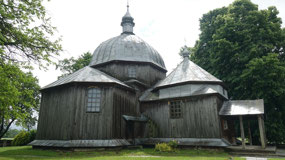
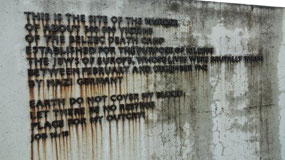
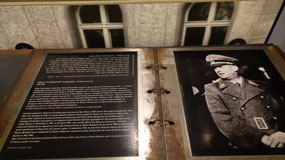
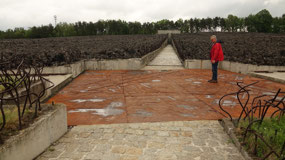
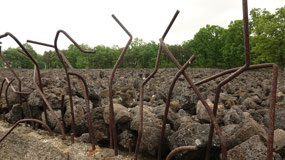
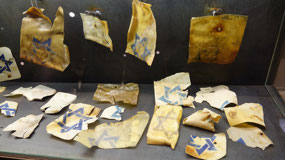
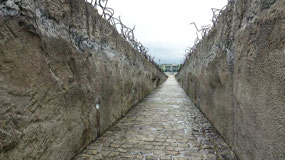
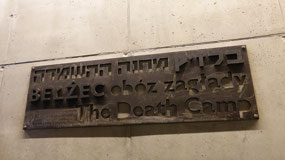
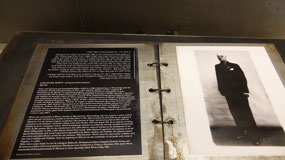
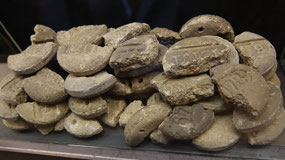




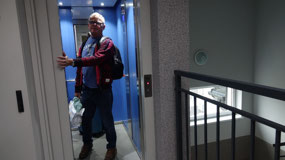

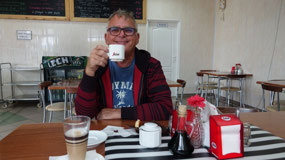
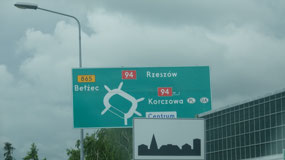
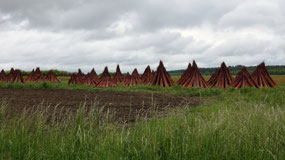
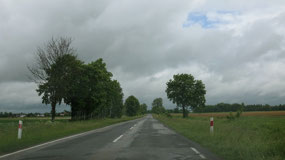
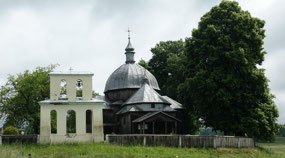
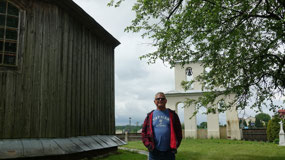
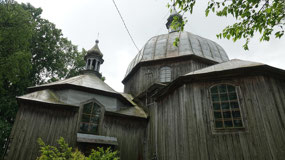
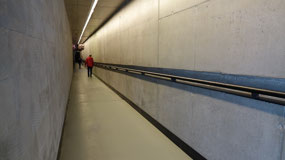
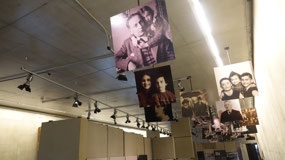
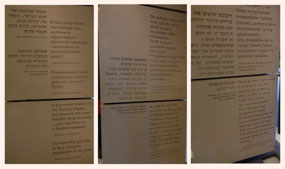
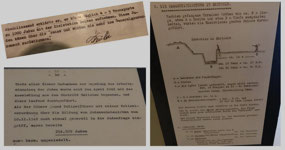
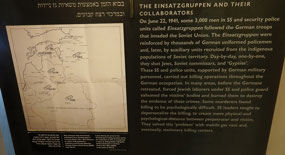
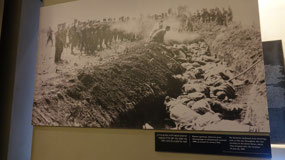
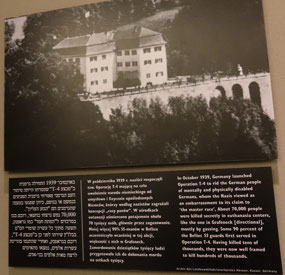
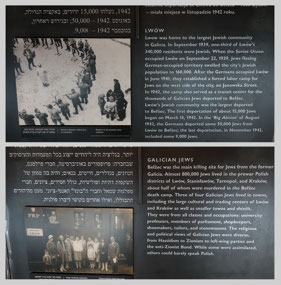
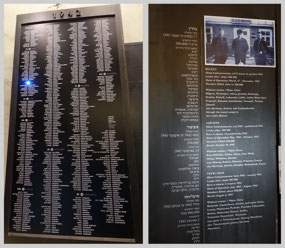

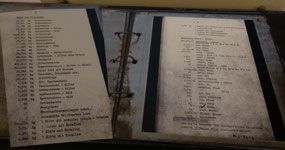
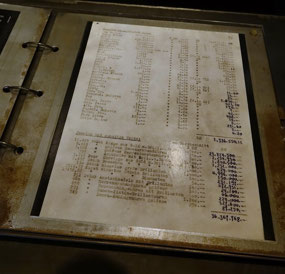
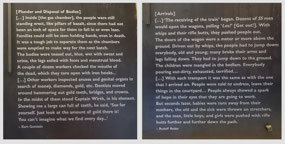
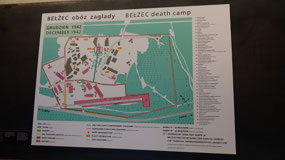
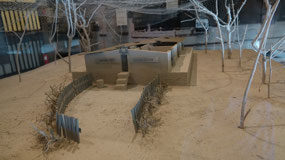
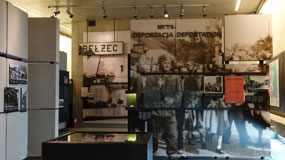


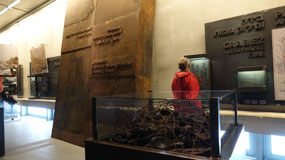
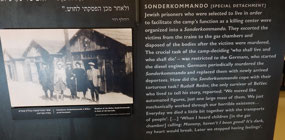
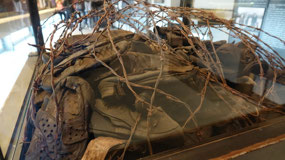
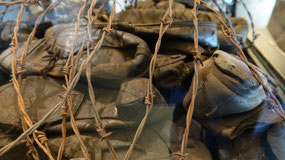
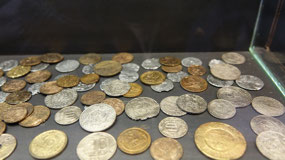
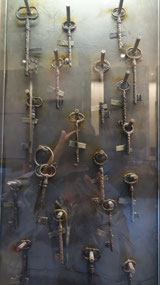
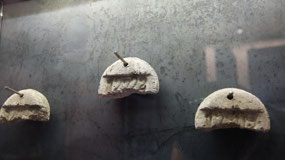
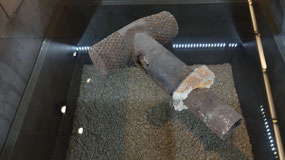
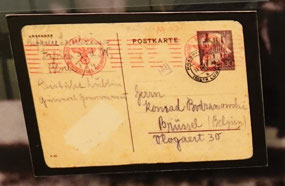
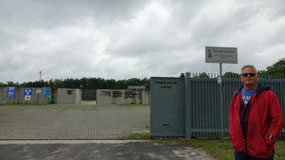
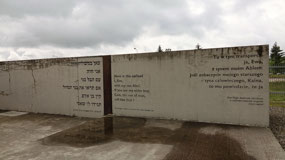
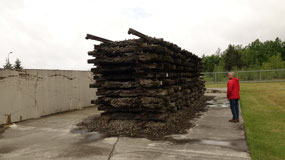
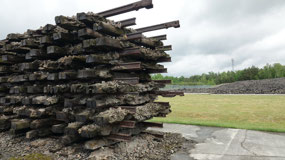
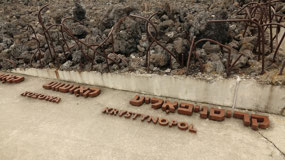
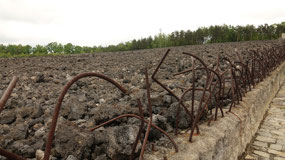
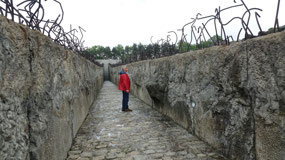
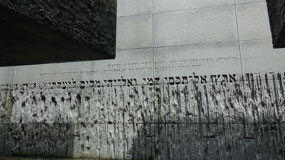
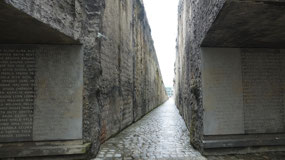
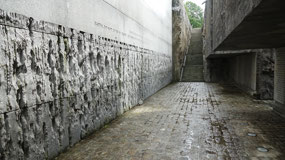

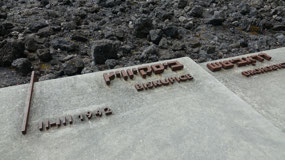
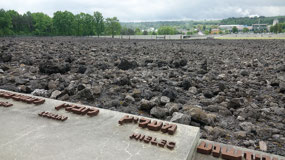

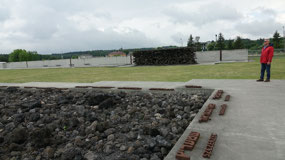
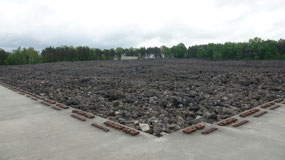
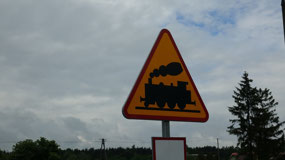
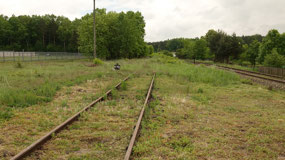
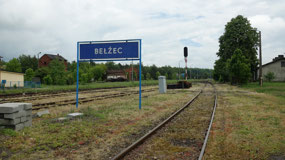
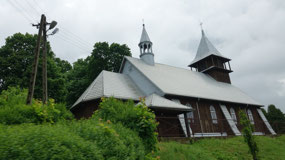
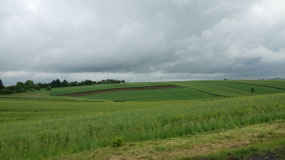
2025-05-23